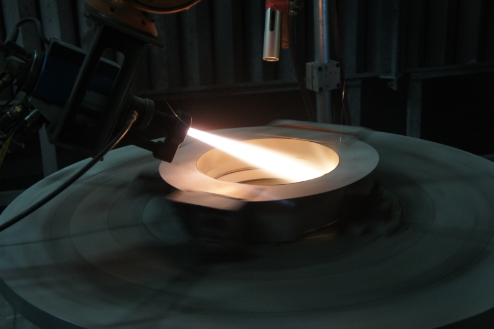In addition to the quality assurance and service commitments provided by the manufacturer, the production and use of any equipment is more important than the quality inspection standards in the industry. Taking into account the various cutting methods that CNC cutting machines can adopt, the quality inspection standards will also be The difference is that plasma cutting is used as an example. What are the relevant standards in the industry? Users how to measure the quality of the CNC cutting machine purchased, CNC plasma cutting machine cutting quality evaluation index is currently no recommended national standards, only the industry standard: namely "hot cutting plasma arc cutting, quality and size deviation." The evaluation of plasma arc cutting quality mainly includes the following aspects: First, the width of the incision: It is one of the most important characteristic values ​​for evaluating the cutting quality of the cutting machine, and also reflects the radius of the smallest circle that the cutting machine can cut. It is based on the size of the incision at the widest point, most plasma cutting machine incision width between 0.15 ~ 6mm. If the width of the incision is not appropriate it will have an effect: 1, too wide incision will not only waste material, but also reduce the cutting speed and increase energy consumption. 2. The width of the kerf is mainly related to the nozzle aperture. In general, the kerf width is always 10%~40% larger than the nozzle aperture. 3. When the cutting thickness increases, it is often necessary to use a larger nozzle aperture, and the incision will also be widened. 4, increase the width of the incision, will increase the amount of deformation of the cutting piece. Second, the surface roughness: It is used to describe the appearance of the cut surface and determine if rework is required after cutting. It is a measure of the Ra value on the cross-section of the incision depth at 2/3. As the result of the action of the cutting air flow in the longitudinal direction of the cutting advance, the main form is the cutting corrugation. The surface roughness after cutting by oxyacetylene method is generally required: Grade 1 Ra ≤ 30 μm, Grade 2 Ra ≤ 50 μm, Grade 1 Ra ≤ 100 μm. The cutting arc Ra value of plasma arc cutting usually exceeds the flame cutting level, but lower than the laser cutting Ra value (less than 50 μm) Third, the squareness of the cut edge: It is also an important parameter that reflects the quality of the cut and relates to the degree of reprocessing that is required after cutting. This indicator is usually expressed in verticality U or angle tolerance. In general, the U value of the plasma arc cutting is closely related to the plate thickness and the process parameters, usually U ≤ (1% to 4%) δ (δ is the plate thickness), and the laser cutting U ≤ 0.5 mm. Fourth, the width of the heat affected zone: This index is very important for those hardenable or heat-treatable low-alloy steels or alloy steels. Excessively wide heat-affected zone widths can significantly change the performance near the incision. The width of the heat-affected zone of the air plasma arc cutting is about 0.3mm. When the underwater plasma arc cuts, the width of the heat-affected zone can also be narrower. V. Slagging amount: It is to describe how much oxide slag or resolidified material adheres to the lower edge of the cut after hot cutting. The level of dross is usually determined by visual inspection and is generally described in terms of none, minor, medium, and severe. In addition, there should be customer's corresponding requirements in the straightness of kerf, the melting of the upper edge, and notch. Select cutting machine to China cutting machine trading network, let you buy the rest assured! A variety of CNC cutting machine and CNC cutting equipment, a variety of cutting machine models, let the optional! Official website: /
Metals, alloys and composite powders commonly used in thermal
spray hardfacing technology and coating service. These unique powders are
instantly heated by thermal spraying (welding) methods such as high temperature
flame or explosive flame, and are sprayed and deposited on the cold or hot
workpiece surface with high-speed heat flow in a molten or semi-melted state to
form a surface Reinforcing layer, in order to improve the wear resistance,
corrosion resistance, heat resistance, oxidation resistance or repair of
external dimensions of the workpiece surface. XTC produces WC, CrC, Oxide
Ceramic, Boride Powder, Metal Alloy Powder, Pure Metal and Spray Wire, etc.
product. For HVOF/HVAF/plasma/Flame spray coating and applications. Meet the
wear and corrosion resistance requirements of different surfaces.
WC, CrC oxide ceramic powder and boride
products are excellent in wear resistance and high temperature corrosion
resistance. Taking WC products as an example, the hardness can reach
HV1300-1500, and the temperature of CrC products can reach 800 degrees Celsius.
Metal alloy powder, Pure Metal and Spray
Wire products have more applications in glass mold, steel and machinery
industries. And XTC products are now become more and more popular in Metal
spray coating and thermal spray coating industry.
Coating Service,Metal Spray Coating,Flame Spray Coating,Thermal Spray Coating Luoyang Golden Egret Geotools Co., Ltd , https://www.hvafspray.com

